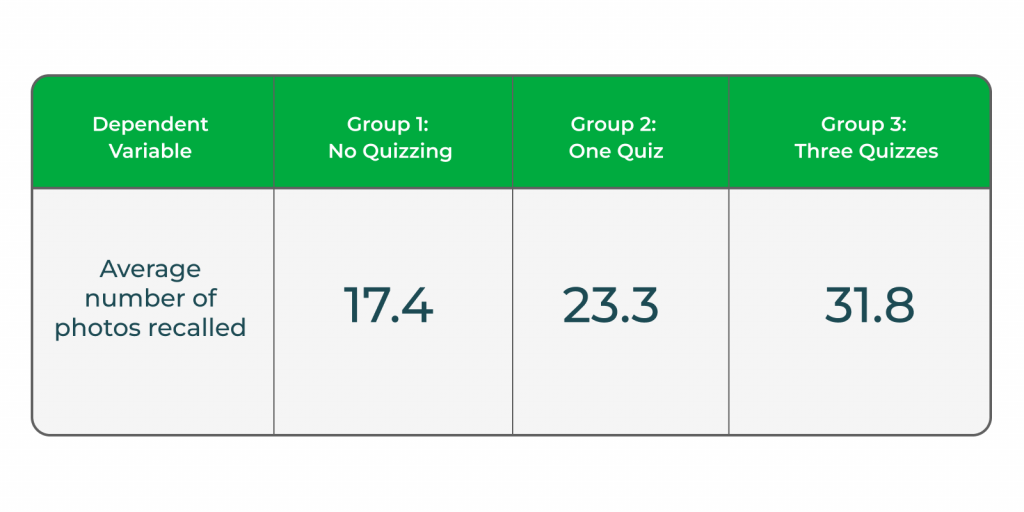Now more than ever, organizations are turning to L&D and training programs to strategically support company goals.
However, implementing effective training can be difficult with many modern workplace challenges, including a newly dispersed workforce. Without guidance and knowledge, training adult learners effectively can leave you spinning your wheels!
Thankfully, with the right approach, you can leverage the science of learning to work on your behalf, making it easier to bring effective changes to your organization through training.
We know that many organizations are working hard to migrate to online training methods, so we wanted to share a few tips and practices for optimizing the effectiveness of your training programs.
Here are three tips to keep in mind for maximizing training success at your organization.
- Adopt Microlearning Methods
- Incorporate Mixed Modalities
- Utilize Reinforcements
Embrace Microlearning Methods
The way information is presented impacts how easily it’s retained. In psychology, tips for memorizing or remembering information include things like chunking, mnemonics, and acronyms. These work because the human brain works best with patterns and short bursts of information.
What is Microlearning?
Microlearning is a method that breaks up important information into bite-sized pieces, so they’re more easily retained by learners. Let’s look at a written example from a BizLibrary Expert Insights Series course titled, Best Use of Your Valuable Time with Barbara Bruno. The following text is from one of these lessons on determining your 20%, see which one is easier for you to read and retain information.

Now look at the same information, presented differently:

Most people would agree that version #2 is easier to read and digest, and that’s because it demonstrates chunking.
Chunking and Microlearning Training Methods in the Workplace
Chunking is the process of breaking information down into related chunks, that helps our short- and long-term memory retain as much information as possible.
Chunking isn’t just a valid strategy for reading content, it’s also viable and effective for video-based content: that’s where microlearning, a video strategy of short, engaging, and focused learning content comes in.
Microlearning is one of the best training methods for employees because it takes larger concepts, like cybersecurity, and breaks them up into a series of components, that when put together, help learners understand larger concepts.
Even the layout of a microlearning lesson can encourage more traction with learners. Let’s take a look at that Barbara Bruno series from before.
- Expert Insights: Best Use of Your Valuable Time with Barbara Bruno – 66 minutes
Here’s the same video, chunked, and put into a micro-learning format:
- Best Use of Time: Determine Your Why – 6 minutes
- Best Use of Time: Value of a Time Study – 5 minutes
- Best Use of Time: Determine Your 20% – 6 minutes
- Best Use of Time: Impact of – 6 minutes
- Best Use of Time: Plan or Fail – 6 minutes
- Best Use of Time: Urgent vs. Important – 6 minutes
- Best Use of Time: Pitfalls of Multitasking – 5 minutes
- Best Use of Time: Compartmentalize – 6 minutes
- Best Use of Time: Segment Your Day – 6 minutes
- Best Use of Time: Choose How You React – 6 minutes
- Best Use of Time: Impact of a Weekly Review – 5 minutes
- Best Use of Time: Learn and Implement – 3 minutes
Breaking your content up into short chunks helps significantly with retention and application. It gives learners the option to choose if they want a refresher or quick lesson on say the “impact of weekly reviews”.
Instead of having to go through the entire course, they can simply choose the area they need help or are most interested in and select that lesson. Whereas they may be put off by the idea of a longer video and not take the course at all – which is a major miss for both the learner and their organization.
Don’t miss out on this tool for enhancing your employee training methods! If you already have videos with longer lengths, all you need to do is identify the important concepts of your video and isolate those concepts into separate lessons.
Mixed Modalities Drive Results
There’s no question that at BizLibrary, we believe that online learning and personalized skills development are incredibly effective training methods in the workplace. Our faith in these methods has driven us to create more than 10,000 microlearning videos and incorporate dedicated skill development features into our platform. Although we know these methods are effective, we know there are other methods that deliver results too!
Mixed-modality training, or training that uses more than one format, has proven to be more effective than single-modality training.
A 2019 study focusing on blended learning highlighted a significant relationship between human interaction and the efficacy of workplace learning programs. It revealed that in blended learning environments where human interaction was integrated, there were increased levels of active behavioral engagement, elevated cognitive engagement, and a more robust and positive emotional engagement compared to settings lacking human interaction.
In fact, a 2023 Training Industry report states that since the push for implementing remote or online training programs skyrocketed during the COVID-19 pandemic, 70% of survey participants plan to continue using a blended or hybrid training model.
Technologies like the hybrid classroom management feature within BizLMS are great tools for executing robust hybrid and online training programs. These tools enable organizations to provide a dynamic learning experience similar to a traditional classroom setting but with the convenience of a virtual environment.
Tools like virtual classrooms give program managers the option to facilitate live, instructor-led training sessions online, allowing learners to actively engage and participate in real-time discussions, presentations, and interactions. Additionally, these tools seamlessly integrate with video-based assignments, offering a comprehensive learning experience that accommodates diverse learning styles and preferences within a virtual space.
Check out this Complete Guide to On-Demand Employee Training for more information on how to implement video-based training at your organization.
Alongside our content and learning management system, the BizLibrary product, BizAcademy, also provides a fresh, mixed modality for training in the workplace. This cohort-based learning environment functions much like a virtual classroom where L&D leaders can enroll their learners in specific live training classes like Inclusive Leadership, Coaching and Feedback, Leadership Mindset and so many more.
Employee Training Methods that Increase Retention
In researching our ebook “Learning Science for L&D,” we looked at the effects that forgetting has on learning programs. The results are convincing: the Ebbinghuas Forgetting Curve tells us that we reliably forget as much as 70% of what we learn after 24 hours and 90% within a week.
That means that without effective reinforcement measures, you waste as much as $0.90 for every dollar you spend!
Fortunately, there are several effective and easy ways to increase learning retention. The most common and perhaps most effective strategy is to implement testing into your learning programs.
A Washington University professor named Henry Roediger proved this fact with a famous experiment. He asked a group of students to study a series of photographs, and then try to recall as many of the photographs as they could.
Following the event, Dr. Roediger created three groups within his sample. He dismissed one group, quizzed another group by asking them to write down as many photographs as they could, and finally, the third group was quizzed three times over what they learned.
Here are the results:

As you can see, in this experiment, the number of photographs recalled increased with more testing.
Roediger later expanded on this experiment, by changing the behavior of the groups.
This time, each group was tested over the photographs, and then over the course of a week, each group had the photographs reinforced in different ways.
- One group studied the photographs three times.
- Another group studied the photographs two times and then took one test on the photographs.
- The last group was tested three times during the week.
At the end of the week, each group took a test to see how many photographs they could recall.
Here are the results:

The group that was tested three times only forgot about 5% of what they initially retained, while the group that only studied the photographs saw their retention drop by more than 40%!
Reinforcement can’t be overlooked, and using tests to improve reinforcement is a great idea for any training program.
Training is tough, and delivering effective learning programs to busy adults is even tougher. With these best practices, you can improve your training process and implement successful training programs at your organization!
To learn more about why investing in online training is a valuable resource for any organization, be sure to download our ebook.

